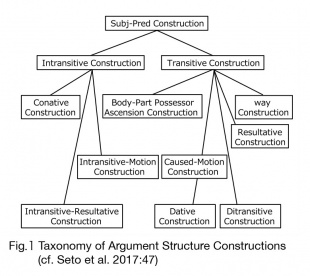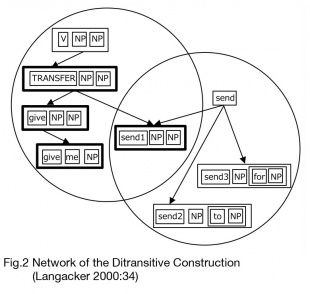- Home
- Faculty Members
- Organization for Fundamental Education
- Naoya Nyugaku
Organization for Fundamental Education
- Key words
- historical linguistics, lexical semantics, argument structure constructions, construction alternations, prepositions, usage-based model

M.A. / Associate Professor
Naoya Nyugaku
Education
Department of English and American Studies, Graduate School of Foreign Studies, Kyoto University of Foreign Studies (Master’s Course); Department of English Literature and Language, Graduate School of Humanities, Konan University (Doctoral Course)
Professional Background
Adjunct Lecturer at Osaka University, University of Toyama, and Konan University,
Medalio Placheta Award (2011)
Consultations, Lectures, and Collaborative Research Themes
Lectures on the history of the English language, linguistics, language and cognition, and a study of English grammar and vocabulary based on the latest linguistic theories
Main research themes and their characteristics
「A Semantic Study of Construction Alternations in English」
Much has been discussed on construction alternations, mainly concerning the dative alternation and the locative alternation, within the framework of linguistic theories such as generative grammar, lexical semantics and cognitive grammar. This study deals with the locative alternation involving verbs of removing as in (1)-(3).
(1) a. Henry cleared dishes from the table.
b. Henry cleared the table of dishes.
(2) a. The thief stole the painting from the museum.
b. *The thief stole the museum of the painting.
(3) a. *The doctor cured pneumonia from Pat.
b. The doctor cured Pat of pneumonia.
The aim of this study is to clarify the fundamental distinction between the from-construction and the of-construction in (1) in terms of semantics and to investigate the exceptional cases in which non-alternating verbs such as cure are used in the from-construction.
「A Historical Linguistic Study of Constructionalization」
As shown in (4a), the verb rob takes the victim as the direct object and the goods is represented as the object of the preposition of.
(4) a. Jesse robbed the rich of all their money.
b. *Jesse robbed a million dollars from the rich.
In (4a) there is a gap between the form and the meaning, and it is also difficult to give an reasonable explanation for the emergence of the preposition of between the two NPs from the viewpoint of Present-day English grammar.
In Old English, the verbs of possessional deprivation appeared in the two types of the ditransitive construction. The two objects in one construction were the accusative and the genitive; those in the other construction were the accusative and the dative. The former developed into the of-construction and the latter into the from-construction in the Middle English period. These syntactic changes can be shown as below.
(5) NP1 V NP2(ACC) NP3(GEN) → NP1 V NP2 of NP3
(6) NP1 V NP2(DAT) NP3(ACC) → NP1 V NP3 from NP2
The verb rob selected the ‘NP1 V NP2 of NP3’ structure, which was derived from the syntactic structure of the Old English verbs of deprivation, when the verb was borrowed from French to English in the Middle English period.
As discussed above, it is essential to study constructionalization from a historical linguistic point of view.
Major academic publications
Nyugaku, N. (1999) “Lexical Semantics and the Old English Passive Constructions”, Konan English Literature, vol. 14, pp. 65-78.
Moriyama, T. and N. Nyugaku et al. (2010) Concepts of English Prepositions ― From the Multidisciplinary Viewpoints of Cognitive Linguistics, Pedagogy, Sociology, Psychology and Language Culture―, V-2 Solution.
Nyugaku, N. (2019) “A Diachronic Study of the Complementation of the Verb rob”, Memoirs of Fukui University of Technology, vol. 49, pp. 208-215.


